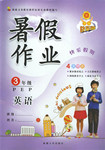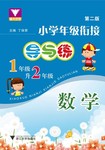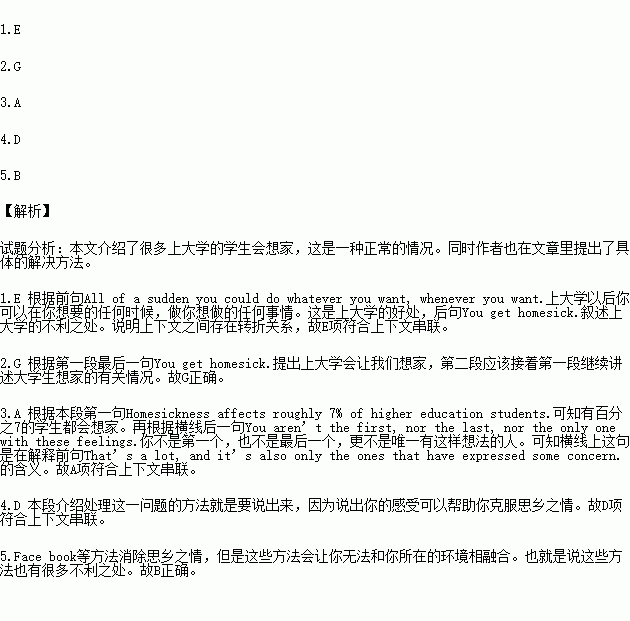题目内容
根据短文内容,从短文后的选项中选出能填入空白处的最佳选项。选项中有两项为多余选项。
There is a ton to love about college life: new friends, classes you may be thrilled about and new-found freedom. All of a sudden you could do whatever you want, whenever you want. _1.__You get homesick.
_2._ A new place, unfamiliar faces, an increased mental workload adding stress on top of it all can be a difficult pill to swallow. This is your first time away from your habitual setting, the first time away from home for an indefinite period of time.
Homesickness affects roughly 7% of higher education students. That’s a lot, and it’s also only the ones that have expressed some concern. __3.__ You aren’t the first, nor the last, nor the only one with these feelings. It’s completely natural, and to be expected.
Recognizing that there is something wrong is the first step. It can be difficult to call home or speak to an advisor about being homesick when everyone around you seems to be having the times of their lives. But remember the fact that there are a ton of others feeling the same way. __4.__.
Also, in the age of everyone being connected via Face book and texting, it can be easy to retreat behind a wall of technology to communicate. __5. It can reduce contact to the new atmosphere around them.
A. So what does this mean?
B. However, this may do more harm than good.
C. You are not alone, so don’t feel too upset.
D. It can give you a little helping hand to speak up.
E. But then something you don’t expect happens.
F. So here are a few things to help get over those blues.
G. Believe it or not, feeling homesick is completely normal for any college student.
 学练快车道快乐假期暑假作业新疆人民出版社系列答案
学练快车道快乐假期暑假作业新疆人民出版社系列答案 浙大优学小学年级衔接导与练浙江大学出版社系列答案
浙大优学小学年级衔接导与练浙江大学出版社系列答案 小学暑假作业东南大学出版社系列答案
小学暑假作业东南大学出版社系列答案 津桥教育暑假拔高衔接广东人民出版社系列答案
津桥教育暑假拔高衔接广东人民出版社系列答案 波波熊暑假作业江西人民出版社系列答案
波波熊暑假作业江西人民出版社系列答案
